
Marketing automation company Sendinblue, which competes with companies like Mailchimp, has raised $160 million in venture capital.Read More
from Social – VentureBeat https://ift.tt/30mLdpe

WebProNews
Palantir CEO: The Most Important Software Company In The World
We are going to be the most important software company in the world,” says Planatir co-founder and CEO Alex Karp. “We are going to deliver the world’s best software with the most efficient way of delivering it. Well over 90% of our growth in the first half of the year came from our existing clients. Our existing clients, the most important clients in the world, are really happy. Of course, we are going to expand those really happy clients who happen to be the coolest people on the planet.”
Alex Karp, co-founder, and CEO of Palantir Technologies Inc. says his company which initiated a direct listing today on the New York Stock Exchange will become the most important software company in the world:
We are very focused on building software a long time before others build it. We are going to be the most important software company in the world. We are going to deliver the world’s best software with the most efficient way of delivering it.
What’s interesting about our client list that people ask is how can you have this super valuable company when there are only 125 customers? To which I respond, yeah, but they are the 125 most interesting institutions in the world. These aren’t just any institutions. We don’t go out and advertise who uses our product but I would say the list of our clients is the single most impressive list of institutions in the world I’ve ever seen. We want to keep these clients.
Well over 90% of our growth in the first half of the year came from our existing clients. What does that mean? Our existing clients, the most important clients in the world, are really happy. Of course, we are going to expand those really happy clients who happen to be the coolest people on the planet.
We’ve built this product which has gotten very little attention called Apollo. Apollo allows us to maintain and deliver software to any number of clients while essentially not growing our Palantiring force at all. We are planning, now that we have Apollo, to grow the number of super cool customers all over the world. We can do it without raising our headcount. What you are going to see is that we are going to continue building with our clients.
Why, because they are the most interesting clients in the world and they clearly based on our numbers like us and some love us. Now with Apollo, we can deliver the whole stack in six hours. I don’t think any other company I’ve seen in the world can do that and we can do it with efficiencies that I don’t know any other company is going to do. We can do this with a small number of people sitting in one office that we have maintaining, updating, and providing them with new products we build.
They don’t have the Frankenstein monster that takes two years to build and has to be maintained with either human hours, like in the government contracting case, or by purchasing new product or compensating salespeople.
Palantir CEO: The Most Important Software Company In The World
Rich Ord
WebProNews
Google Unveils New TV Service, Google TV
Google made a surprise announcement today, unveiling its take on television: Google TV.
In the blog post announcing the release, Google acknowledged the myriad of options people have to watch TV. From movies, to live TV to streaming and DVR content, the supply of content is virtually limitless. Unfortunately, the plethora of services can make it difficult to find content. In addition, it can be an annoyance switching back and forth between a bunch of different services.
Google is looking to address these issues, with a service that pulls content from a variety of sources and serves as the central hub from which to watch it. The new service will be heavily integrated with Google Assistant, providing the ability to interact via voice.
“The new Google TV experience brings together movies, shows, live TV and more from across your apps and subscriptions and organizes them just for you,” writes Shalini Govilpai, Senior Director, Google TV. “To build this, we studied the different ways people discover media—from searching for a specific title to browsing by genre—and created an experience that helps you find what to watch. We also made improvements to Google’s Knowledge Graph, which is part of how we better understand and organize your media into topics and genres, from movies about space travel to reality shows about cooking. You’ll also see titles that are trending on Google Search, so you can always find something timely and relevant.”
The new Chromecast with Google TV is available for $49.99 and comes with a remote and 4K support. The Google TV app will begin rolling out to Android devices in the US today, and will start showing up on Sony televisions and other Android TV OS-powered devices starting next year.
Google Unveils New TV Service, Google TV
Matt Milano
Written By: Nicole Portman & Emmilly Best
Originally Published: July 4, 2020 | Last Updated: Sep 30, 2020
Facebook’s Limited Data Use feature protects Facebook advertisers from violating consumer privacy laws outlined in CCPA. Advertisers have until October 20, 2020 to update the Facebook Pixel to be compliant with CCPA.
The post Update Your Facebook Pixel for CCPA Compliance appeared first on Seer Interactive.
Do you want to learn how to do keyword research? Check out our guide that will show you how to find keywords for your blog.
The post How to Do Keyword Research for Beginners (Step-by-Step) appeared first on Blog Tyrant.
WebProNews
Microsoft Promoting Windows on ARM
Microsoft is promoting Windows on ARM, just months after Apple announced the Mac would move to ARM-based processors.
At Apple’s WWDC conference, the company announced it was abandoning Intel’s processors in favor of custom silicon based on ARM. The move has been widely seen as an industry-changing move, one that will force Microsoft and PC makers to follow suit.
In fact, former Apple executive and Be, Inc. founder, Jean-Louis Gassée predicted that Microsoft would follow Apple’s lead fairly quickly. A failure to do so would mean giving up the high-performance market to Apple.
“This leaves Microsoft with a choice: Either forget Windows on ARM and cede modern PCs to Apple, or forge ahead, fix app compatibility problems and offer an ARM-based alternative to Apple’s new Macs,” wrote Gassée. “It’s a false dilemma, of course. Microsoft will forge ahead…with repercussions for the rest of the Windows PC industry.
“Specifically, what are Dell, HP, Asus, and others going to do if Apple offers materially better laptops and desktops and Microsoft continues to improve Windows on ARM Surface devices? In order to compete, PC manufacturers will have to follow suit, they’ll ‘go ARM’ because, all defensive rhetoric aside, Apple and Microsoft will have made the x86 architecture feel like what it actually is: old.”
Microsoft is doing exactly as Gassée predicted, touting the benefits of Windows on ARM, including 64-bit emulation, which will allow the platform to run x64 apps. This will help ease the transition, much as Apple’s Rosetta layers will allow ARM-based Macs to run older, Intel-based software.
“We are excited about the momentum we are seeing from app partners embracing Windows 10 on ARM, taking advantage of the power and performance benefits of Qualcomm Snapdragon processors,” writes Panos Panay, Chief Product Officer, Windows + Devices in a company blog post. “We heard your feedback and are making Microsoft Edge faster while using less battery, and announced that we will soon release a native Microsoft Teams client optimized for Windows 10 on ARM. We will also expand support for running x64 apps, with x64 emulation starting to roll out to the Windows Insider Program in November. Because developers asked, Visual Studio code has also been updated and optimized for Windows 10 on ARM. For organizations, we’re committed to helping them ensure their apps work with Windows 10 and Microsoft 365 Apps on ARM64 devices with App Assure. We are working closely with Acer, HP, Lenovo, Samsung and Surface to bring these Windows 10 on ARM innovations and products to our shared customers.”
It looks like the tide is beginning to turn against Intel, and the company largely has itself to blame. The company has struggled in recent years, with supply issues and defects, as well as ongoing security problems in their chipsets that some experts have labeled “unfixable.”
Microsoft Promoting Windows on ARM
Matt Milano
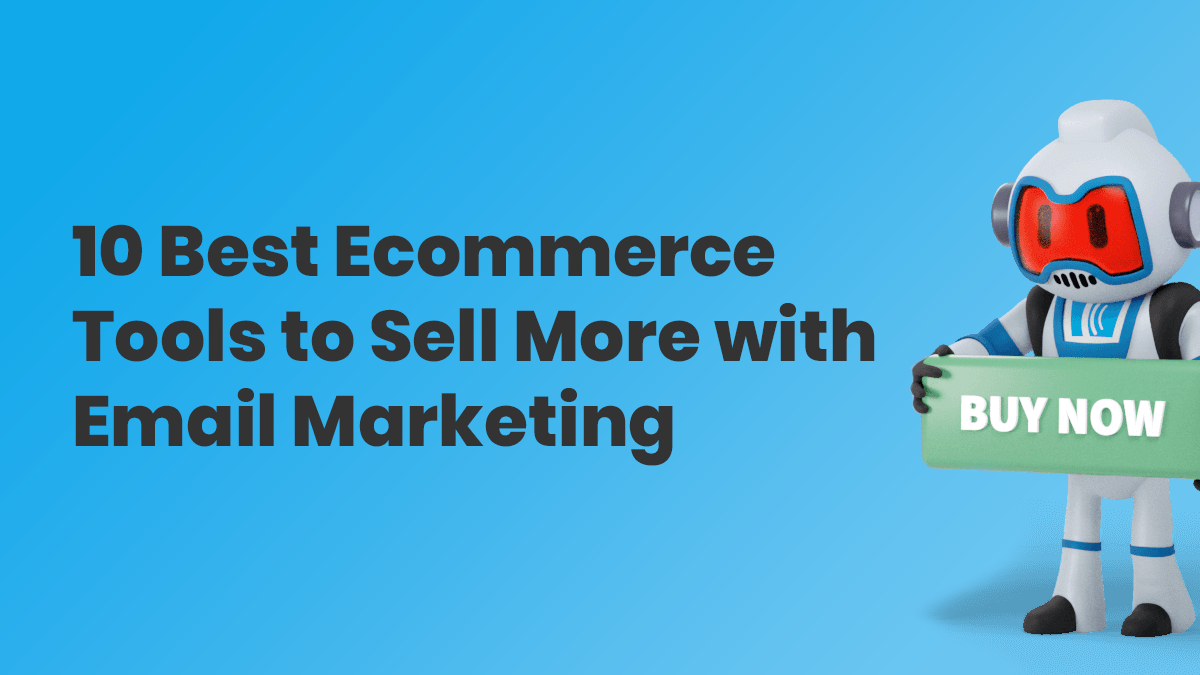
Did you know 80% of retail professionals say email marketing is their most significant customer retention driver? Plus, it costs 5 times as much to attract new customers than to keep existing ones. That’s where email marketing becomes a vital tool to growing your business.
But we’re willing to bet that email marketing isn’t the only tool you use to run your ecommerce business. And it shouldn’t be. With the right ecommerce tools in your arsenal, it’s easy to turn first-time visitors into lifelong customers.
Pairing email marketing with top ecommerce tools can help businesses of all sizes automate their marketing and focus on growing their business.
Email plays a pivotal role in encouraging a customer’s repeat purchases — email drives more repeat sales that search, direct, and social channels
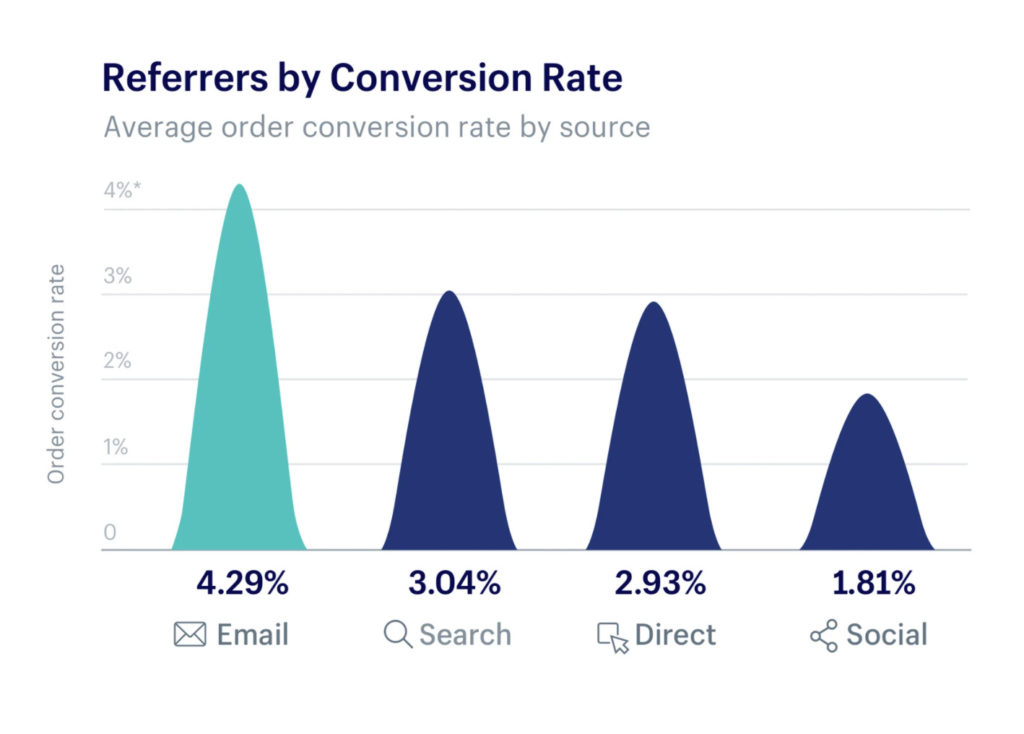
Integrating your email marketing with the right ecommerce tool can help you:
But finding the perfect ecommerce solution is no easy task. There are hundreds of providers to choose from. So to make it a bit easier for you, we identified 10 of our favorite ecommerce integration solutions that seamlessly integrate with AWeber.
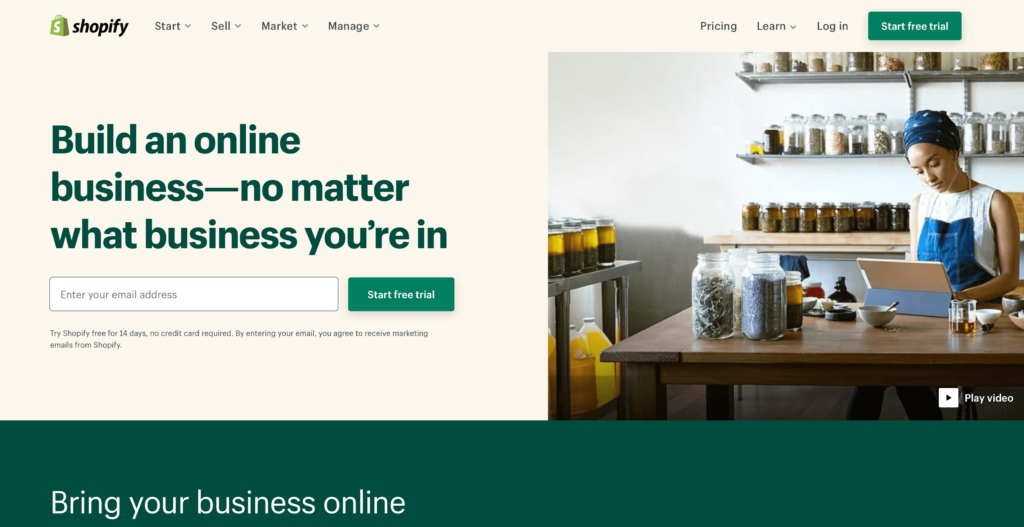
Shopify is one of the best ecommerce platforms with everything you need to sell online, on social media, or in person. The AWeber and Shopify integration leverages the powerful customer data from your Shopify store to create targeted, timely email marketing campaigns.
Shopify allows you to easily create an online shopping experience, including website creation, product management, and inventory. Connecting Shopify and AWeber requires absolutely zero coding experience.
Plus, AWeber’s Shopify integration includes tag support, which lets you tag your subscribers based on their interest in specific products. This lets you send more targeted content to customers within the same list, including cart abandonment emails.
Shopify's integration with AWeber allows users to communicate with their audience in the time and space they choose to sell both products and services.
Want to learn more? Check out our step by step instructions on how to integrate Shopify with AWeber.
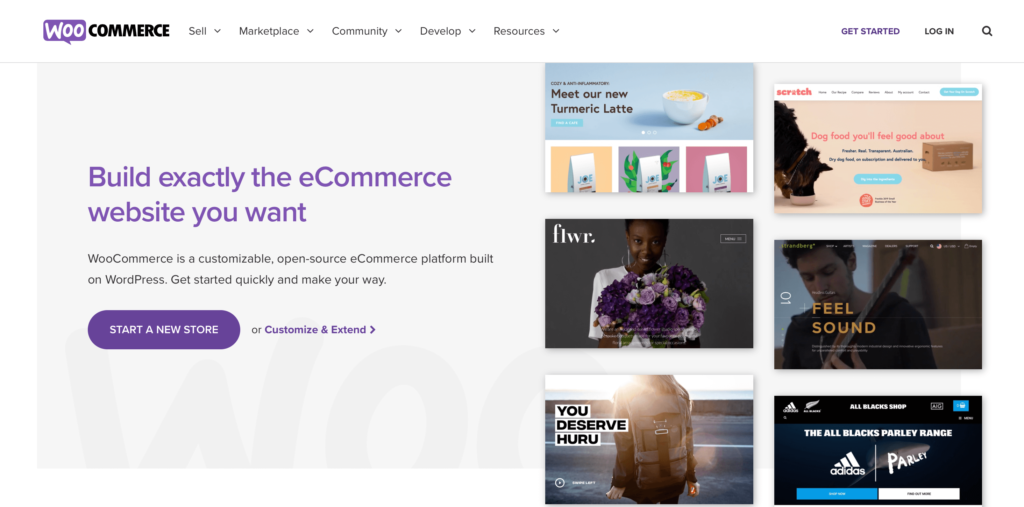
WooCommerce is one of the most customizable ecommerce platforms for building the online business of your dreams. It is also one of the most popular WordPress ecommerce plugins.
With the AWeber and WooCommerce plugin, you can quickly and easily grow your email audience and boost sales. It includes tag support — making it easier to know more about your audience, boost sales with personalization, and motivate your audience to purchase by emailing them incentives.
The cart abandonment options in AWeber's WooCommerce integration have some additional features that are worth checking out. Customers can recover an abandoned cart by simple clicking a link in the email. This recovery hyperlink takes them back to their cart and allows them to complete their purchase. You can also see when a cart is or is not recovered, so you can send them an incentive to revisit your store.
Learn more about AWeber’s WooCommerce integration by seeing step by step connection instructions.
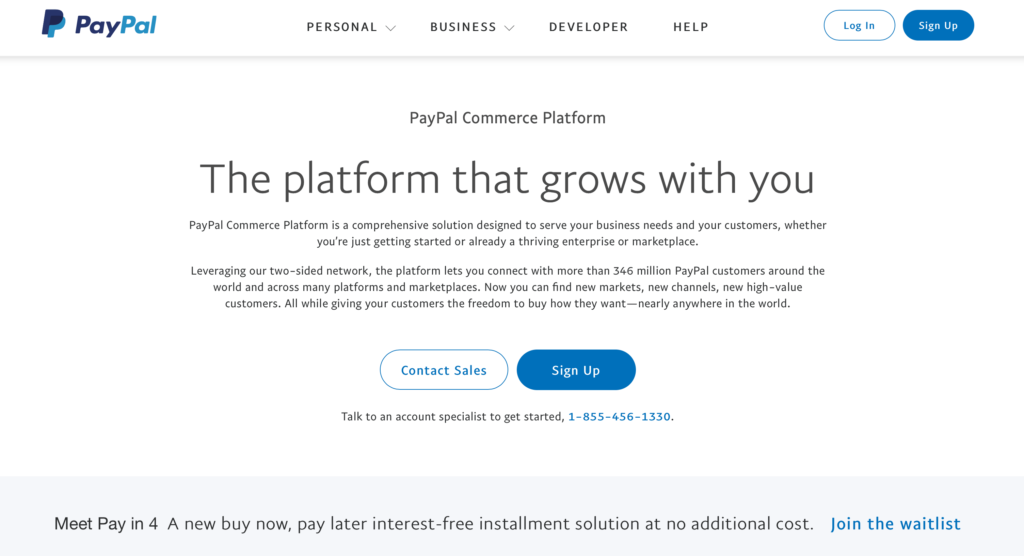
PayPal is one of the most popular online payment systems with over 325 million active subscribers worldwide. But did you know PayPal has 44% higher conversion rates than non-PayPal transactions?
PayPal is one of the easiest and most convenient ways to let customers complete their purchases. Plus, AWeber's PayPal integration adds subscribers to your email list when a payment is made with a PayPal button. It can also unsubscribe them if recurring payments stop. You can also add customized product tags to your subscribers, which lets you send more personalized email messages based on what you know they like.
Tags allow you to create all types of awesome segments, broadcasts, campaigns, and dynamic content to target subscribers more precisely. This makes it easy to turn first-time buyers into repeat customers by emailing new customers an incentive — like a coupon, discount code, or free content they may like based on their first purchase.
View step by step instructions on how to integrate PayPal with AWeber.
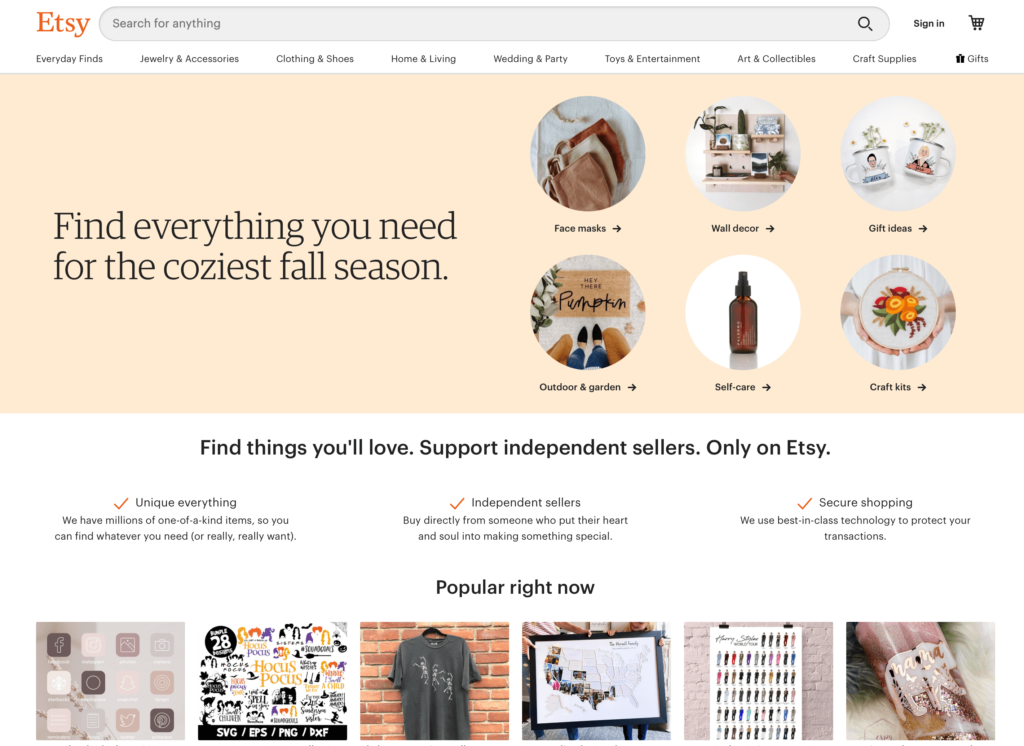
Etsy is a global commerce platform that focuses on selling unique and creative goods, including handmade, vintage, and craft supplies. The Etsy platform is an awesome ecommerce solution for creative and crafty entrepreneurs. Etsy allows creative entrepreneurs to sell their products online and offers a wide range of tools that help makers start, manage, and scale their businesses.
Etsy is fast and affordable. Plus, creating a shop on Etsy is free, but you only have to pay $0.20 for listing your products for four months or until they sell.
The AWeber and Etsy integration includes tag support, making it easy for you to use advanced settings to automate email campaigns when specific tags are applied, so you deliver emails based on a person's purchase history. Emails followed up with personalized content help to increase revenue opportunities in your automated campaigns.
Check out our instructions to integrate Etsy with AWeber.
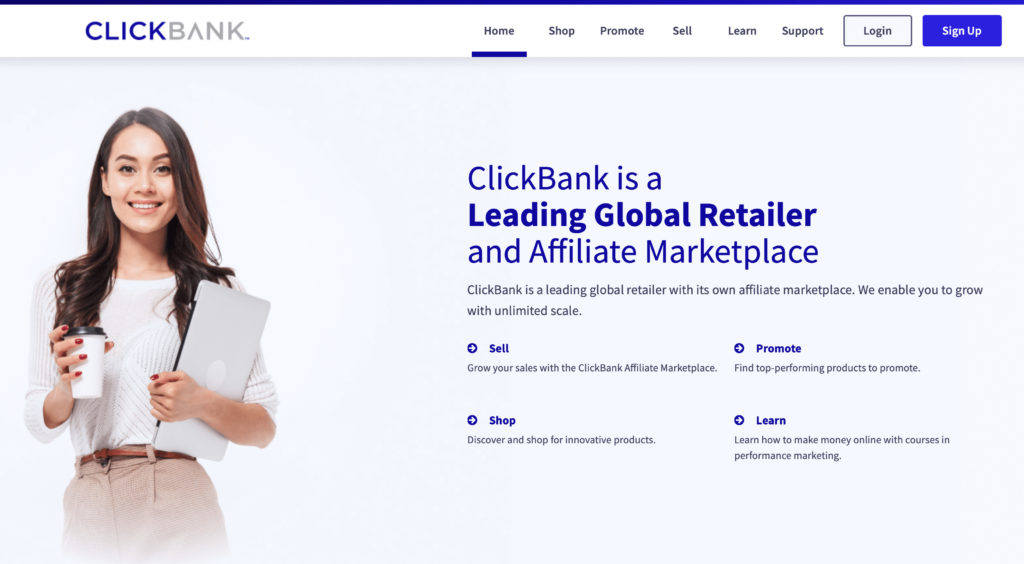
ClickBank is a global retailer and an affiliate marketplace that allows entrepreneurs to earn income on commissions of other people's products that they promote and sell. It benefits the product owner and the affiliate promoting the product as it provides the opportunity for both parties to earn revenue. Plus, it potentially expands the products' reach to a new audience.
AWeber's integration with ClickBank makes finding affiliate products to promote to your audience incredibly easy and straightforward. Simply select the product and get a link to include in your newsletter or on social media. When a member of your audience purchases that product, you receive a commission. Commissions vary by product but tend to be around 50%.
AWeber's Clickbank integration has tag support, similar to many of the other integrations we already talked about. Tagging subscribers based on products they’re interested in makes it easy to email customers an incentive — like a coupon, discount code, or free content they may like based on their first purchase. Easily automate campaigns based on a person's purchase history when a tag is applied, allowing you to follow up with more relevant and personalized content to increase your revenue opportunities.
See step by step instructions on how to integrate Clickbank with AWeber.
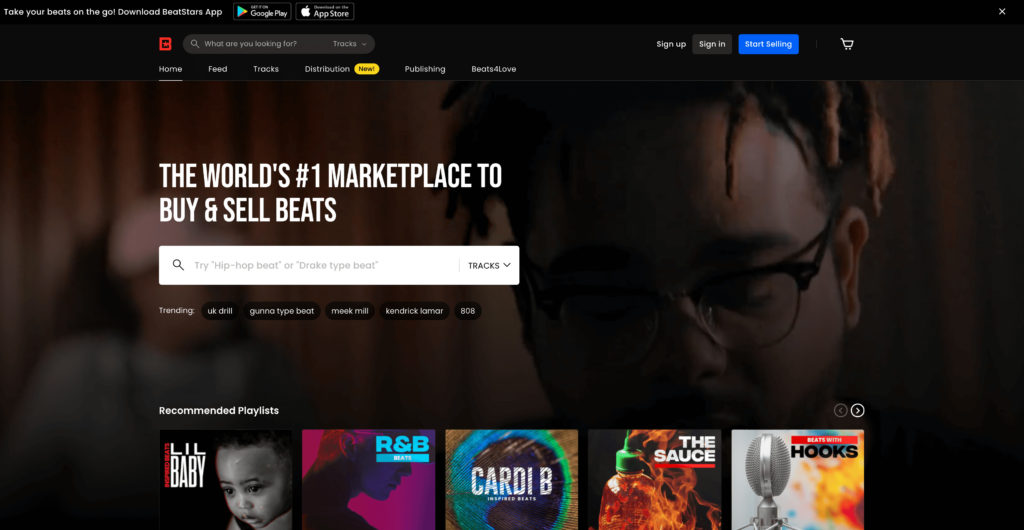
BeatStars is a social music marketplace for recording artists, songwriters, beatmakers, and music producers to upload, sell, and distribute music. As the beat selling industry becomes more popular, it is more important than ever for artists to connect with their audience to create a long-lasting relationship.
Email marketing is one of the most effective ways for beatmakers and music producers to market their audio. By connecting with AWeber, sellers can add people who purchase music to an email list. When you have new music to download or a tour to announce, you can easily reach out to your audience.
AWeber allows you to use tags to segment your audience based on what links they're clicking. Set it up to trigger campaigns automatically when a tag is added, so you can easily send personalized content to the right audience at the right time to increase beat sales.
Check out our step by step instructions to integrate BeatStars with AWeber.
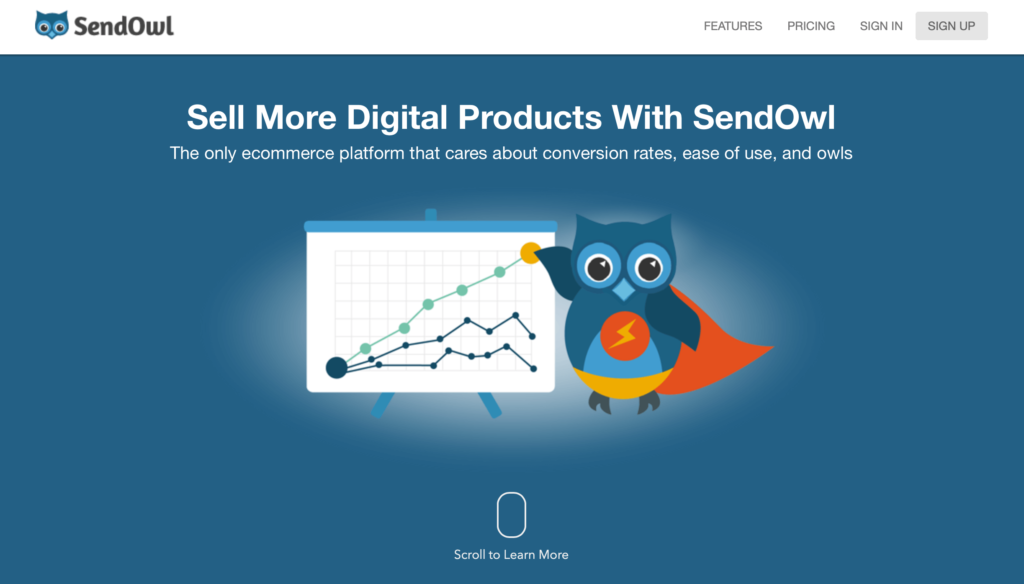
SendOwl makes it easy for you to sell digital products directly to your audience from your blog, social media, or anywhere you can paste a link. SendOwl is a simple tool to help you sell your digital creations online.
SendOwl provides digital delivery for files, tangible goods, and services you wish to sell online. It communicates with payment gateways such as PayPal and Stripe, or online stores such as Shopify, to ensure that orders are only completed once the buyer has paid for their product, and you have received the funds.
SendOwl provides a streamlined checkout and secure product delivery, including revenue-boosting features such as upsells, affiliate schemes, and on-site checkout.
The AWeber integration with SendOwl lets you easily add your customers and tags to your AWeber mailing list. You can also set up automated campaigns in order to follow up with them seamlessly. And then send discounts and promotions to encourage reorders.
Want to learn more? See our step by step instructions on how to integrate SendOwl with AWeber.
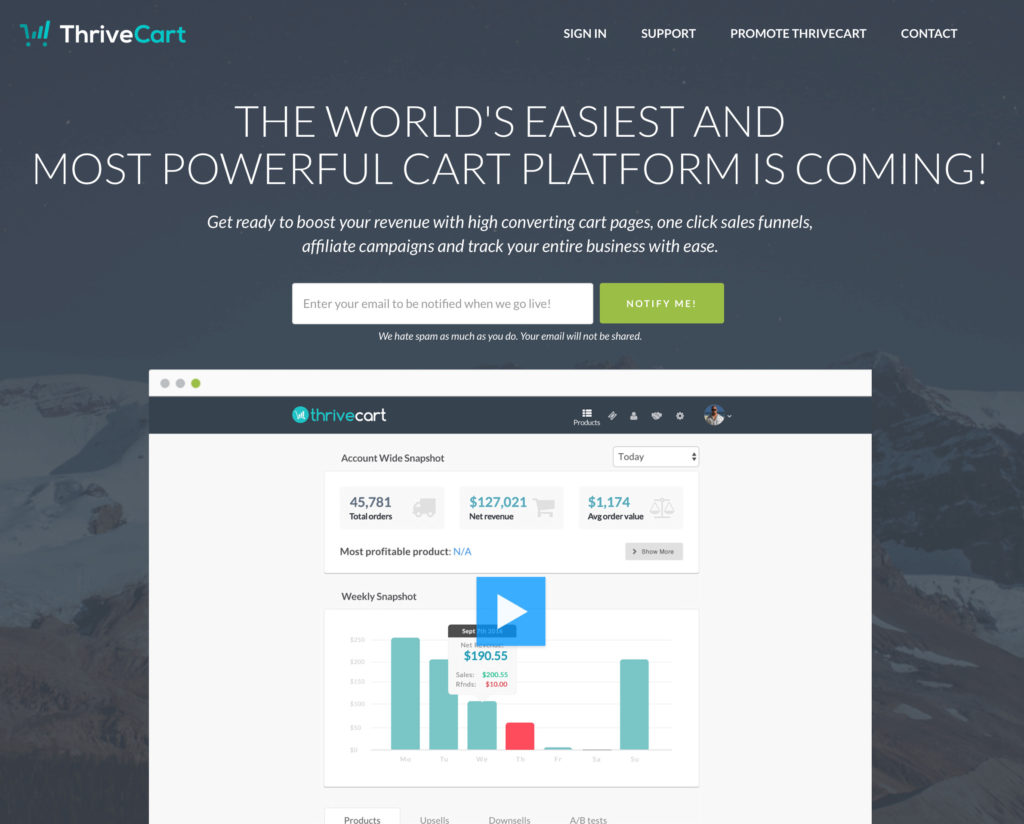
ThriveCart is a shopping cart service that allows you to take payments and customize your customers' experience for all products. ThriveCart specializes in delivering digital and subscription services.
ThriveCart offers plenty of options to increase your sales, including high converting checkout pages, upsells, sales funnels, bump offers, upsells, and down sells. It also has a powerful affiliate program built-in, so there’s no need to purchase additional software.
ThriveCart is somewhat unique when it comes to pricing. Most shopping cart services charge a monthly fee, but with ThriveCart, you pay a one-time fee for a lifetime of services.
When you use AWeber's integration with ThriveCart, you add customers to your AWeber lists as they purchase your products. You can apply product tags easily to trigger campaigns, making it easy to follow up later with personalized content or an incentive coupon.
Check out instructions on how to integrate ThriveCart with AWeber.
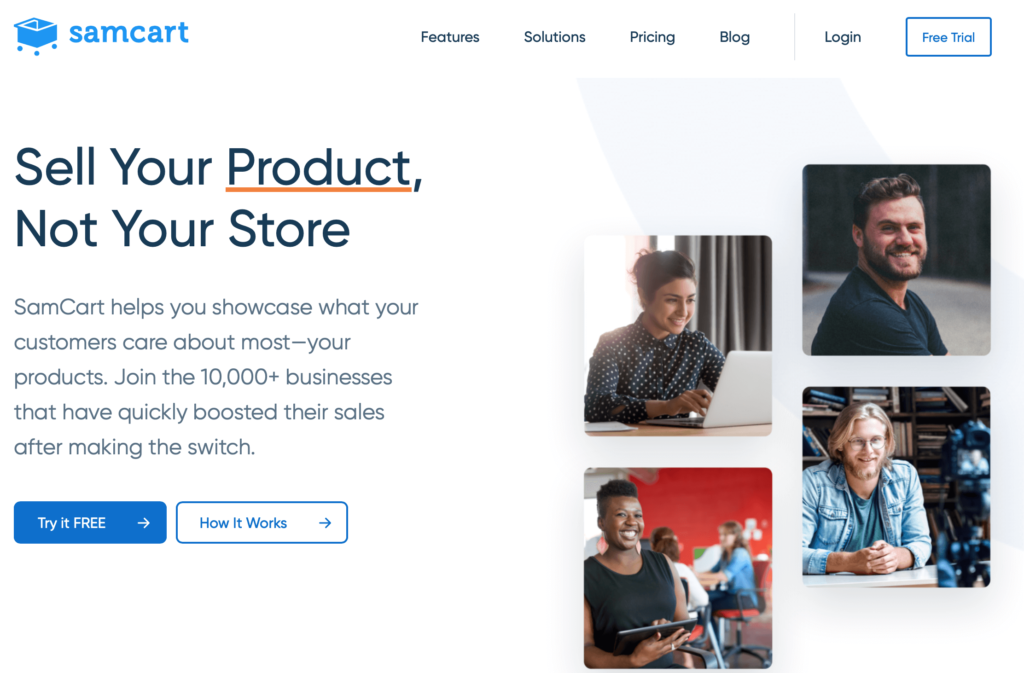
SamCart is a checkout platform that focuses on the product level and not the store level for converting sales from digital products. SamCart offers tools to help you create beautiful pages to showcase your products and sales optimization tools built specifically for the "non-techie."
Design tools include drag & drop page builder, pre-designed templates,localization (sell you products in any language or currency), digital wallets integrated with payment providers, automatic coupons, and custom domains to keep your branding front and center.
SamCart also provides a number of revenue optimization tools to help you show additional products on your checkout page. Other tools include add-ons (order bumps) and one-click upsells, A/B testing on every page, advance reporting, the ability to segment users into courses and bundles, and pay-what-you-want donation options.
With the AWeber and SamCart integration, buyers can be added or removed from the lists you choose. AWeber makes it easy to automate a welcome series campaign for new customers to begin building a relationship with your audience while keeping them engaged over time.
View step by step instructions on how to integrate SAMCart with AWeber.
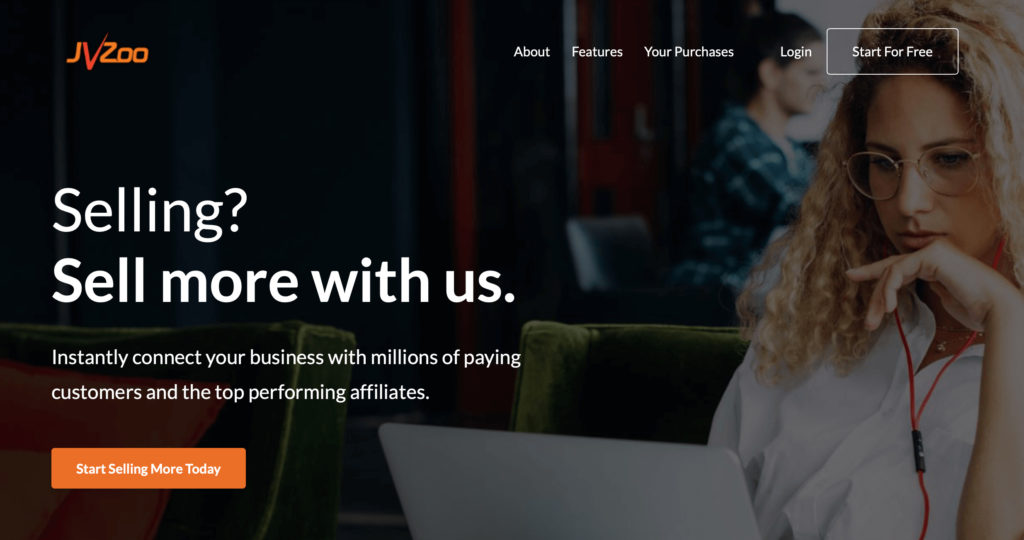
JVZoo is an affiliate marketplace that helps facilitate and automate sales, process payments, market and deliver digital products in over 200 niches, including affiliate marketers, software developers, info-marketers, membership sites, and product creators.
For product sellers, there are no setup or maintenance fees. Your affiliates only make a commission when a sale is made, not when traffic comes to your site.
If you are an affiliate, your commission will be deposited instantly into your JZooPay affiliate account every time you make a sale. JZooPay is 100% free to use for affiliates.
When AWeber is integrated with your JVZoo, customers are added to your AWeber mailing list at the time of purchase. Once you know your customers’ preferences and purchase history, you can set up AWeber campaigns to send relevant, personalized content, and even suggest additional products to increase revenue opportunities.
Learn how to easily connect AWeber with JVZoo.
AWeber’s integration dashboard makes it super easy to connect with integrations that power your business with your email marketing.
To find the integration you’re looking for, go to the AWeber Integration home page. Enter your integration and click to connect.
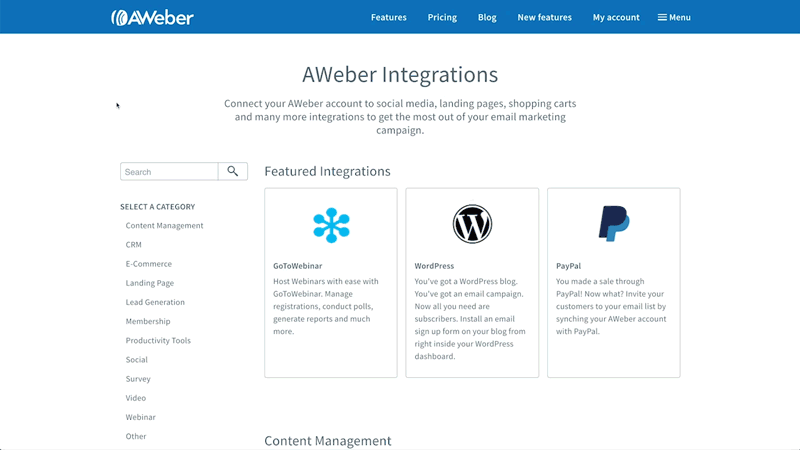
You'll get everything you need to start growing your ecommerce business online — including sign up forms, email templates, pre-written automated campaigns, and landing pages.
AWeber is a powerfully-simple email marketing solution that makes it easy to communicate with your online store visitors. AWeber is committed to building tools for small business owners who want to understand and connect with their customers, deliver personalized experiences, and turn more first-time shoppers into lifelong customers.
Along with its award-winning 24/7 US-based customer support, AWeber delivers the ability to load and manage contacts quickly, send amazing emails, build visually-stunning landing pages, and analyze results without having to be a tech whiz.
The post 10 Best Ecommerce Tools to Sell More with Email Marketing appeared first on AWeber.

WebProNews
D-Wave Announces 5,000 Qubit Quantum Computing Platform
D-Wave has announced its next-generation quantum computing platform built for business.
Quantum computing is the next big evolution of computing, providing performance and abilities current computers cannot even begin to match. Entire industries, including cryptography, physics, artificial intelligence and more will be upended by the technology.
D-Wave is one of the leading companies providing quantum computing services, and their new platform increases those abilities, offering 5,000 qubits. Qubits, or quantum bits, are the quantum computing equivalent of traditional computing bits. Unlike bits, that have a binary value of either 0 or 1, qubits can exist in a state of both, thanks to the principles of quantum mechanics. The more qubits a system offers, the more powerful it is.
“Today’s general availability of Advantage delivers the first quantum system built specifically for business, and marks the expansion into production scale commercial applications and new problem types with our hybrid solver services. In combination with our new jump-start program to get customers started, this launch continues what we’ve known at D-Wave for a long time: it’s not about hype, it’s about scaling, and delivering systems that provide real business value on real business applications,” said Alan Baratz, CEO, D-Wave. “We also continue to invest in the science of building quantum systems. Advantage was completely re-engineered from the ground up. We’ll take what we’ve learned about connectivity and scale and continue to push the limits of innovation for the next generations of our quantum computers. I’m incredibly proud of the team that has brought us here and the customers and partners who have collaborated with us to build hundreds of early applications and who now are putting applications into production.”
This is a big step forward for the quantum computing industry and should be a big success for D-Wave.
D-Wave Announces 5,000 Qubit Quantum Computing Platform
Matt Milano
When blogging, it pays dividends to lay out the structure of your piece before you begin writing. The structure is the skeleton of your text and preparing it has multiple benefits. Firstly, it’s easier to write a text when your structure is already there. Secondly, a clear structure helps the reader to easily read your post and grasp the core message. Here, we’ll give you practical tips to help you set up a clear blog post structure.
Structuring a text well improves readability and, thereby, helps your readers to understand your text. If readers better understand the information you provide, it’s more likely they’ll find the answer to the question they have. When Google notices, by so-called user signals, you’re giving valuable answers to certain queries, chances are you’ll climb the rankings.
Read more: why text structure is important for SEO »
Creating a clear text structure is just one aspect of SEO copywriting. If you want to master all facets, take a look at our SEO copywriting training, which is part of our online SEO training subscription.
Think before you start writing. Get a pen and paper and write down what you want to write about. That could include a bit of keyword research, but ideally, you’ve already done that. Check out our ultimate guide to keyword research for more on this. Next, set up a text structure and keep it close to hand while writing your blog post. One way of setting up a structure for your text is by following these three steps:
Once you’ve gathered all the information you want to use in your post or article, you can begin structuring, so make a list of everything you want your article to cover. For instance, for this post this could be: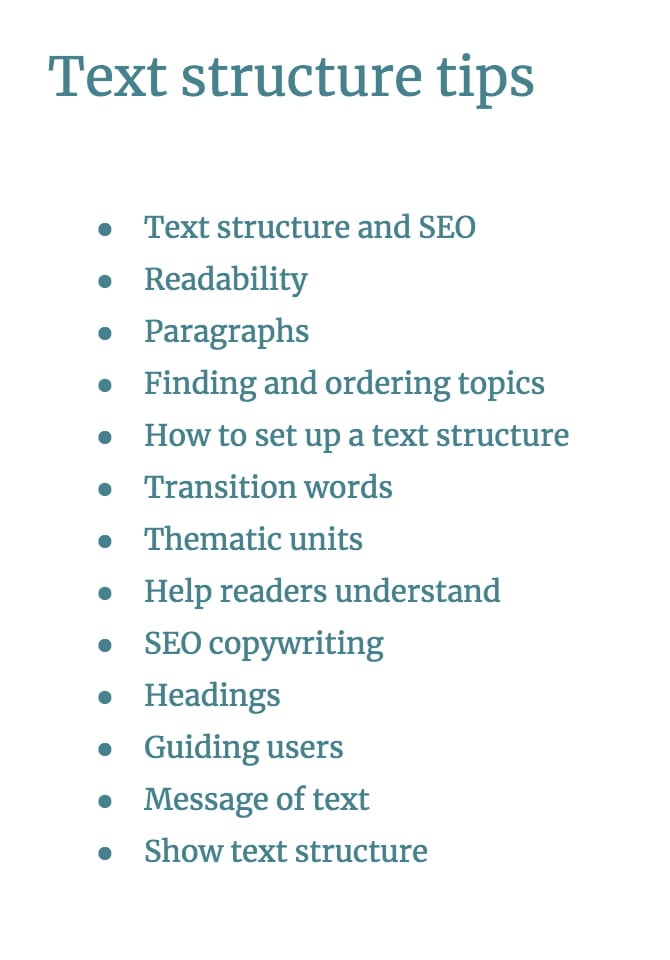
When you have a clear overview of all the topics you want to discuss in your article, you can start bundling topics. Similar topics should, of course, be discussed together. For this post, this could look like this: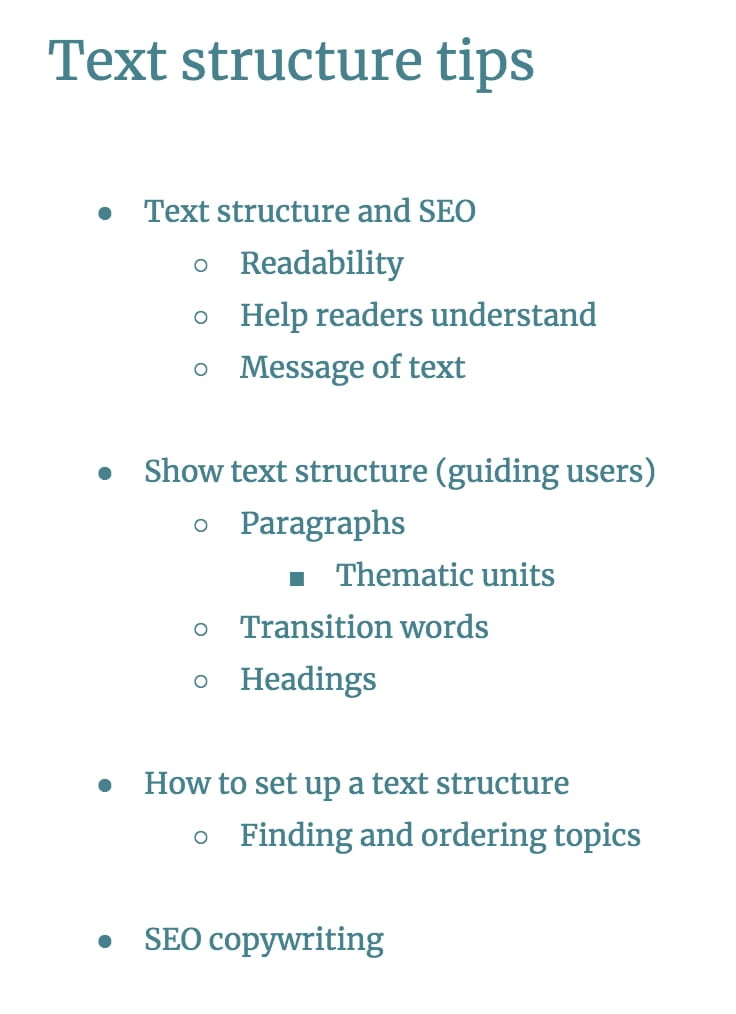
When you’re done bundling, you should decide on the order of the topics in your article. In most cases, you can decide to order thematically. For instance, if you want to discuss various aspects or angles of the main topic of your blog post. But you can also order your text chronologically or didactically, as you can see in the order types table below. In the example we’re discussing, ordering topics thematically makes the most sense: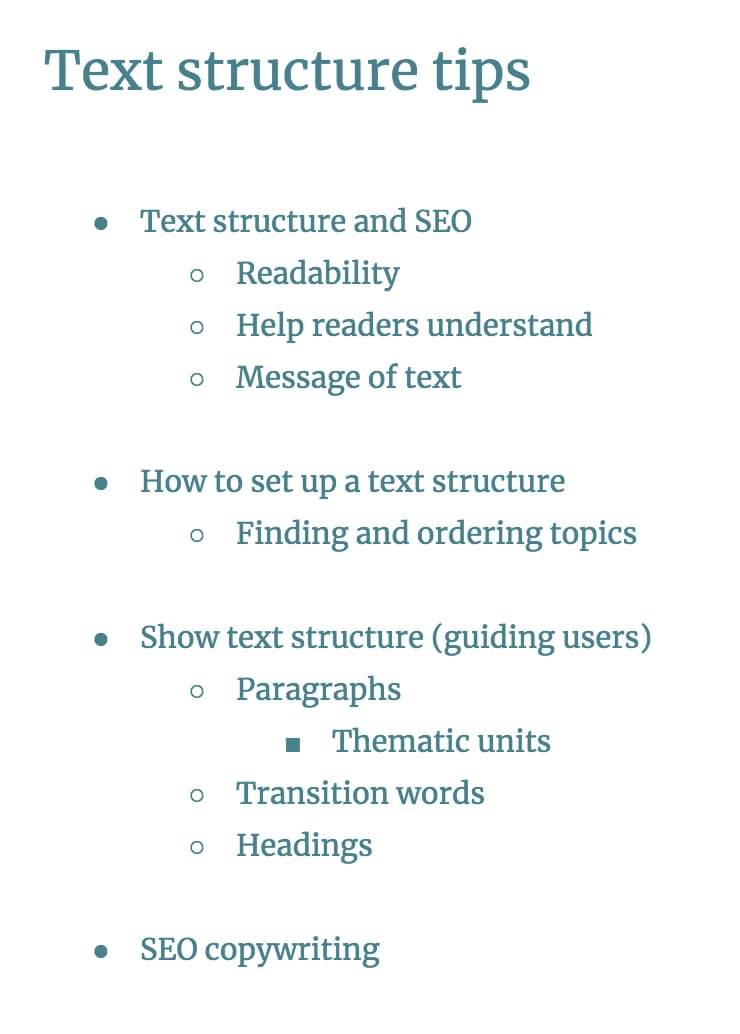
After you’ve ordered the topics you want to address in your article, you should make a new list. This list essentially is a summary of the article you’re about to write. Write a short sentence or a few words for every paragraph you plan to write. This list serves as the skeleton of your article, and you should keep it close to refer to during the rest of the writing process.
Apart from arranging the order of topics according to a theme; you could also order them chronologically or by explaining the basics first and going on to more difficult aspects – known as a didactic order. This is a good idea when you are trying to explain a complicated subject:
| Order type | |
|---|---|
| Thematic | ordered on theme, aspect, topic |
| Chronological | old to new |
| Didactic | easy to hard |
| Problem – solution(s) | introduce the problem first and then possible solutions |
Another way to order your articles is the inverted pyramid style, a method that’s been used by journalists for ages. It means you start out with the most crucial element in the beginning and later add details and more background information. Especially in news articles, this works well.
So, now you’ve got a skeleton/summary of the text you’re about to write. When you start writing keep the following best practices in mind to make sure the reader will easily flow through your well-crafted structure!
You have bundled topics together in the text structure you have set up, so now you can start to write your paragraphs. But what makes a good paragraph? A paragraph can be defined by three things. Remember these things while writing!
Lots of people make mistakes while creating paragraphs. Some writers just put whitespace in their text in random places for aesthetic purposes but don’t think about the coherence and structure of the text. In many cases, the coherence within paragraphs and between paragraphs remains unclear. These kinds of mistakes can mess up the structure of your articles.
Paragraphs can be short or long. The length of a paragraph is decided by the theme you are discussing, so it could be anywhere between two and fifteen sentences. However, for writing on websites, we would advise creating short paragraphs (keep it to less than 6 or 7 sentences). Because reading from a screen is hard.
For text on websites, we’d advise you to start your paragraph with the most important sentence, then explain or elaborate on it. A reader will be able to grasp the most important concepts from your article, just by reading the first sentences of your paragraphs. You can conclude longer paragraphs with a summarizing sentence to clarify your point.
To guide your reader, you should use plenty of transition words. Transition words give direction to your readers. These words show the reader that you’re summarizing (e.g. and, too), comparing (e.g. less than, rather) or concluding something (e.g. thus, consequently, hence).Table 2: examples of transition words
| Type of relation | Examples of transition words |
|---|---|
| enumerate | and, first of all, also, another, furthermore, finally, in addition |
| cause | because, so, due to, while, since, therefore |
| compare/contrast | same, less, rather, while, yet, opposite, much as, either |
| conclude | as a result, hence, consequently, therefore, in conclusion |
| ambiguity | seems like, maybe, probably, almost |
| emphasize | most of all, most noteworthy, especially relevant |
Using transition words is like putting cement between your sentences – they show your readers the connection between sentences and paragraphs.
If you’re not used to using transition words, it can be hard to correct content you have already written. Be sure to use transition words whenever you are summarizing or enumerating. Also, using signal words in your conclusion helps people to grasp your core message.
In the first place, headings are of great importance for your readers. Headings allow your readers to quickly scan through your text and decide whether or not (or which parts of) they want to read your article. Therefore headings should be attractive and should cover the content of the paragraphs below. Whether headings play a direct role in SEO is debatable, but if readers easily grasp the message of your content, that surely helps your SEO.
You should put a heading above each paragraph, or above a series of paragraphs which contain similar topics. The headings should reflect the structure of your text. We advise you to put a heading above very long paragraphs, or above several shorter paragraphs which are thematically similar. Here’s a detailed guide on how to implement headings in your post and on your site.
Landing on a page and not having a clue what to find there can make people hesitant to read on. Just seeing a long piece of text might even scare people away. Most people don’t take the time to read your entire post, so to help them check whether this post offers them what they are looking for you can add a table of contents in the beginning. Especially, if you’ve written an extensive post or page, a table of contents give the readers a sense of control, and the possibility to scan which topics you deal with in post.
If you followed the steps above, your post will have a decent structure and headings already, which means this advice is easy to implement! The old-fashioned way to implement a table of contents is adding anchor tags to all your headings and adding a [TOC] shortcode at the beginning of your post. But if you’re using the WordPress block editor together with Yoast SEO premium it’s even easier! We’ve now added a TOC block to the Yoast SEO blocks. This means you’ll just have to look for the right block, add it to your post, and you’re done:
Setting up a coherent structure for your blog post is an essential step of SEO copywriting. It will result in a better understanding of the message of your blog posts. If people understand your message, they will be much more likely to share your post on social media or buy what you are selling.
Taking time to think about a clear text structure before you start writing is worth your while. As you’re writing, think about the structure of your paragraphs, your use of transition words and the headings in your post. If you follow these ‘rules’ your blog post will be far more understandable and readable to your audience.
Want to dive deeper into the subject of copywriting? Sign up for our SEO copywriting course for more writing tips!
Keep reading: The ultimate guide to Content SEO »
The post Blog post structure: How to set up an easy-to-read text appeared first on Yoast.
The SaaS industry is growing rapidly: Between 2019 and 2023, the global SaaS market is forecast to be worth a staggering $60.36 billion and is expected to register a 9% CAGR (compound annual growth rate) within these four years.
When SaaS started, vendors focused on providing solutions that covered various industries (also known as horizontal SaaS). Some prominent examples include Microsoft 365, Quickbooks and Slack.
However, in the last few years, there has been a surge in vertical SaaS companies, which create solutions that are catered to niche industries. Some prominent examples include Veeva, Procore and Clio.
Now, the question is: What exactly is vertical SaaS? Is it the future? And if so, how do you implement it in your business? That’s what I will talk about today.
In this article, you will learn:
Book My Free SaaS Marketing Consultation
Vertical SaaS is a group of software solutions that serve the needs of a niche industry. In other words, vertical SaaS companies cater to the distinct needs of a single industry, such as retail, banking, healthcare or hospitality.
Vertical SaaS may be designed to solve a single problem or a myriad of business issues, but regardless of the model, all vertical SaaS companies target a narrow market. This model takes a more conservative approach to marketing the product than their horizontal counterparts.
As with any product, constant use ensures its regular evolution.
Software as a Service really began back in the 1960s, although it was known as “utility computing” or “time-sharing,” and consisted of the “centralized hosting of business applications.” Mainframe providers such as IBM offered services like database storage and computing power to enterprises.
Then in the 1990s, the Internet helped evolve this service into “a new class of centralized computing, called application service providers.” An ASP is a “company that offers individuals or enterprises access to applications and related services over the Internet, colloquially known as ‘apps-on-tap'.”
SaaS, as we know it today, is basically the evolution of the ASP model: It's a business model in which customers pay to use software that is hosted by a company on a remote computer. Netflix is a prime example. This business model has has been growing steadily in popularity simply because it provides greater flexibility for the customer.
And now we've entered a new stage of SaaS evolution – vertical SaaS:
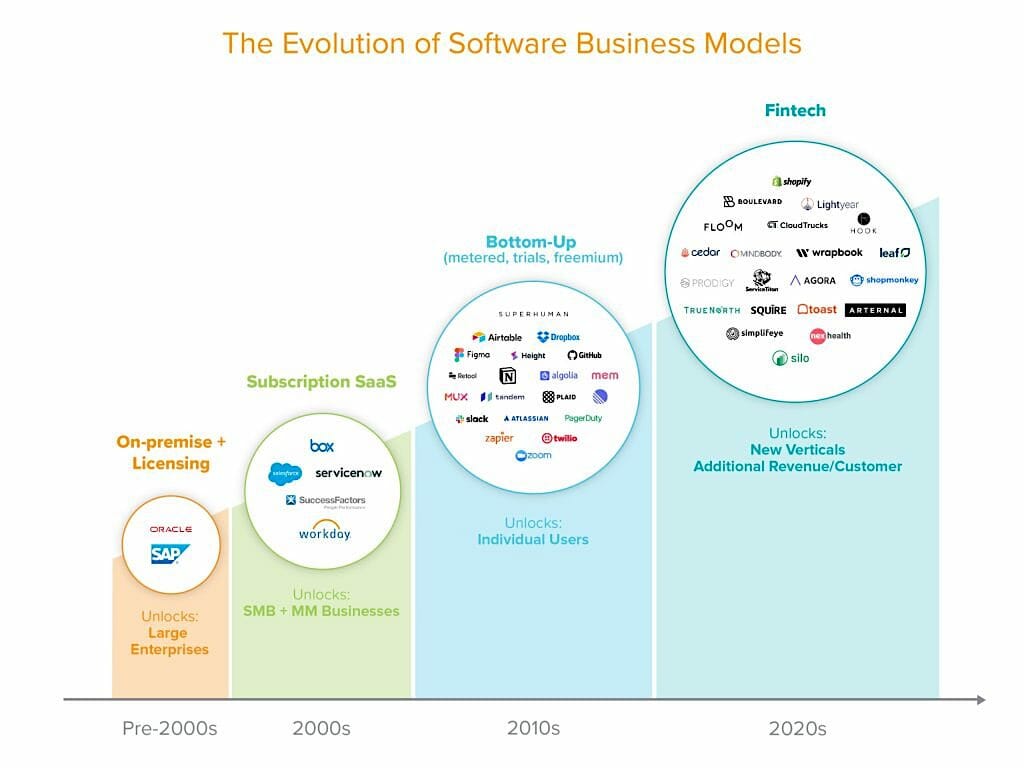
In recent years, several vertical SaaS companies have seen huge success:
These numbers indicate that the vertical SaaS market is gaining popularity and will likely be a tough competitor to horizontal SaaS companies in the coming years. It means that no matter which industry you want to target with your vertical SaaS product, you will probably see a huge momentum in your product’s demand.
More SaaS Content:
* Is Netflix a SaaS? 25 Examples of SaaS Companies that Are Rocking It
* SaaS Marketing Strategy: 12 Killer Ideas to Grow Your Company
* The Anatomy of an Effective SaaS Lead Generation Strategy
Before you start building your SaaS product, it is essential to understand the differences between horizontal and vertical SaaS in order to determine what is right for your business so you can create your product accordingly.
This table explains the key differences between horizontal and vertical SaaS:
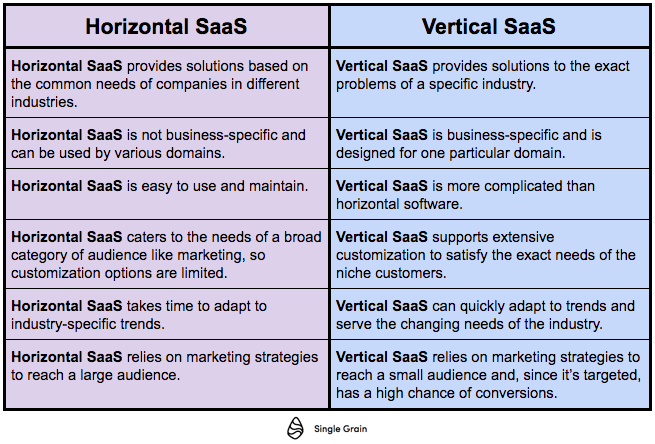
As you can see, horizontal and vertical SaaS enjoy different benefits. Let’s discuss the advantages for each of these SaaS industries.
Though both horizontal and vertical SaaS offer specialized software to companies, they also face unique challenges.
Related Content: SaaS CAC: A Guide to Customer Acquisition Costs
The right type of model for your SaaS business depends mainly on your long-term goals. Ask yourself:
Do you want to serve customers across multiple industries? Or do you wish to excel in one industry? If you choose the former, go for horizontal SaaS; if you choose the latter, go for vertical SaaS.
Remember, building a vertical SaaS product requires you to take a different approach than a horizontal SaaS.
To help you gain more clarity, here are some insights on how creating a vertical SaaS product is different from building a horizontal SaaS product:
Book My Free SaaS Marketing Consultation
Now that you know what vertical SaaS is, its benefits, challenges and how it differs from horizontal SaaS, let’s take a look at how to implement a vertical strategy for your SaaS business.
As mentioned above, vertical SaaS solutions do not follow the “one-size-fits-all” approach. Instead, it addresses industry-specific challenges remarkably well.
Thus, it is imperative to pick the right vertical. By “right,” I mean an industry that has the potential for growth and is not nearing saturation.
Research by Bowery Capital found that vertical SaaS companies in the manufacturing, cannabis, transport and drones industry are likely to see continued opportunities:
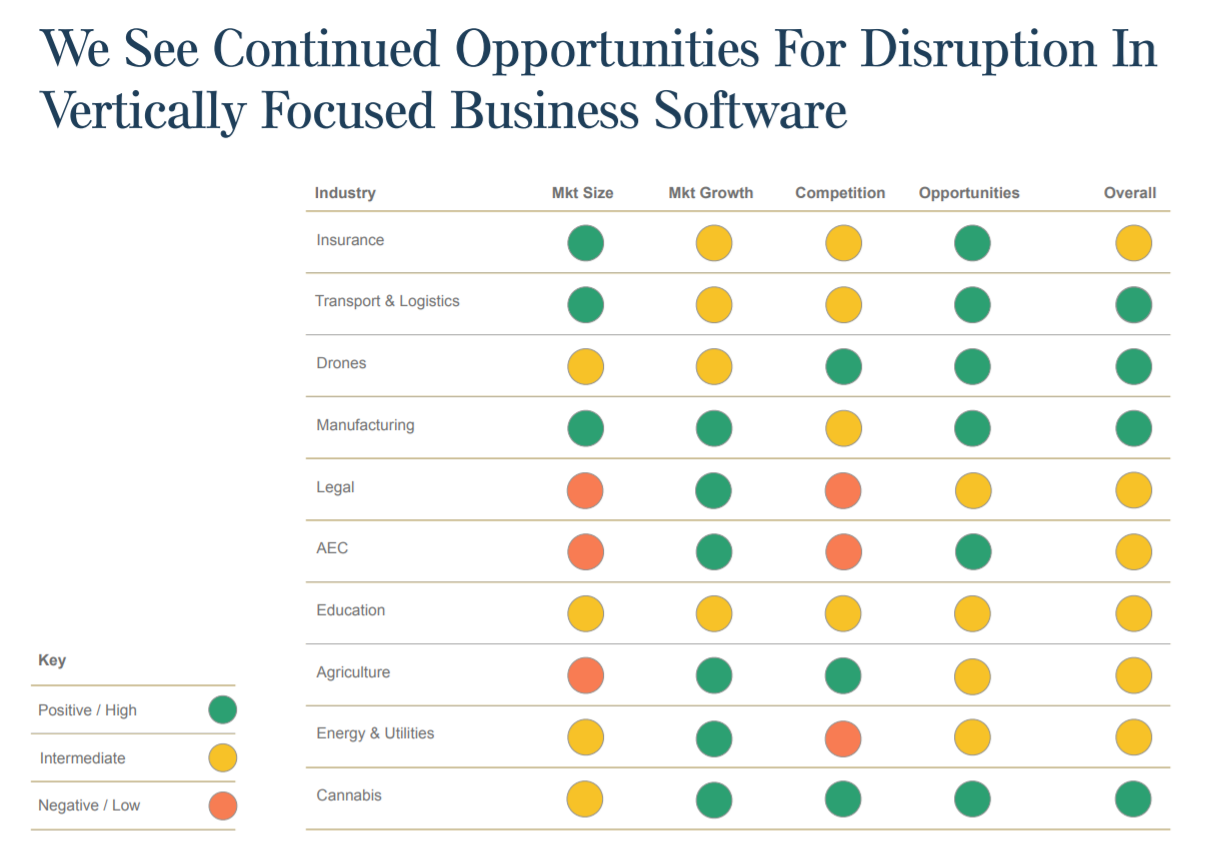
Here are other key findings in the research:
Conducting market research is equally important. Once you decide on your vertical, identify the top ten SaaS companies (both horizontal and vertical) and check their offerings (both pricing and features).
Then, determine how you can differentiate your product from theirs. If there aren’t enough things that you can do to make your product unique, you will likely struggle to gain a significant market share. In that case, you should try another vertical.
Pro Tip: Pick at least three verticals and conduct extensive market research. It helps determine the right industry that offers enough opportunities to outdo your competitors.
Related Content: Creative Marketing Strategies: How to Market a Cannabis Company
It might be compelling to jump to another vertical because they also have similar problems or you wish to increase your customer base. But you should avoid doing that. Each additional vertical requires you to customize your product to a certain extent which will limit your capability to offer solutions to solve the problems of a specific vertical.
For example, Innovaccer, a healthcare data activation company that changes the way care is delivered, started with its focus on diverse sectors like finance, retail, entertainment and healthcare. However, in 2016, Innovaccer’s founders decided to narrow their focus to just healthcare.
They let go of their non-healthcare customers, losing almost 60% of their revenue. Soon enough, the company started gaining momentum and has raised more than $120 million to date.
Pro Tip: Another benefit of sticking to one vertical is that you can acquire, aggregate and store industry-specific metrics. You can then monetize this data via value-added solutions like benchmarking or marketing reports.
Targeting a single market allows you to offer industry-specific compliance tools and standards. For example:
The more industry-specific compliance tools you offer, the better your product will be. This will also enable you to stand out from the crowd and penetrate the market much faster.
Pro Tip: If you serve global customers, make sure you know the laws and standards of different countries.
It is essential for vertical SaaS companies to speak the language of prospects and provide solutions that completely address the industry’s pain points. Doing so increases your chances of acquiring and retaining customers.
Insiders can provide deep insights into the industry nuance, which can help you improve your product. Another benefit of engaging with industry insiders is that it empowers you to quickly understand and adapt to the market changes.
Insiders could be anyone who has been in your industry for a long time, such as:
Pro Tip: If possible, try to hire a few veterans in the industry because they have decades of knowledge and have seen the industry transform. They can offer guidance and help you understand the key challenges of the industry.
Related Content: 3 Steps to Increase SaaS Conversion Rates with Customer Education
No matter how good your product is or how much better it solves your customers’ problems, if they don’t know about it, they can’t buy it.
Another reason to promote your product aggressively is that your competitors have probably been in the market for years. In order to make people choose your product over theirs, you need to build trust with tailored marketing.
Follow these tips to promote your product:
Book My Free SaaS Marketing Consultation
I have discussed what vertical SaaS is, its future potential, benefits, challenges and ways to implement a vertical strategy in your business.
Now, let’s look at some of the top global vertical SaaS companies that are shining in their respective industries.
HotSchedules is an end-to-end restaurant management SaaS company that generated over $100 million in revenue in 2018. It features inventory management, workforce management, payroll services, training and development, and analytics.
This SaaS product makes it easier for restaurant owners to communicate and manage staff better. It is developed by keeping industry-specific things in mind, such as different schedules, shift changes, and restaurants' unique working environment:

Kinnser offers web-based healthcare solutions for home health, hospice and private duty clinics. Founded in 2003, Kinnser serves more than 4,000 customers.
From administration to point-of-care to billing, Kinnser is designed to help users improve communication, increase efficiency, and coordinate care for patients. Kinnser is also a HIPAA-compliant tool.
It offers reliable claim submission tools and eligibility checks so that doctors can focus more on providing the best possible solution to their patients:
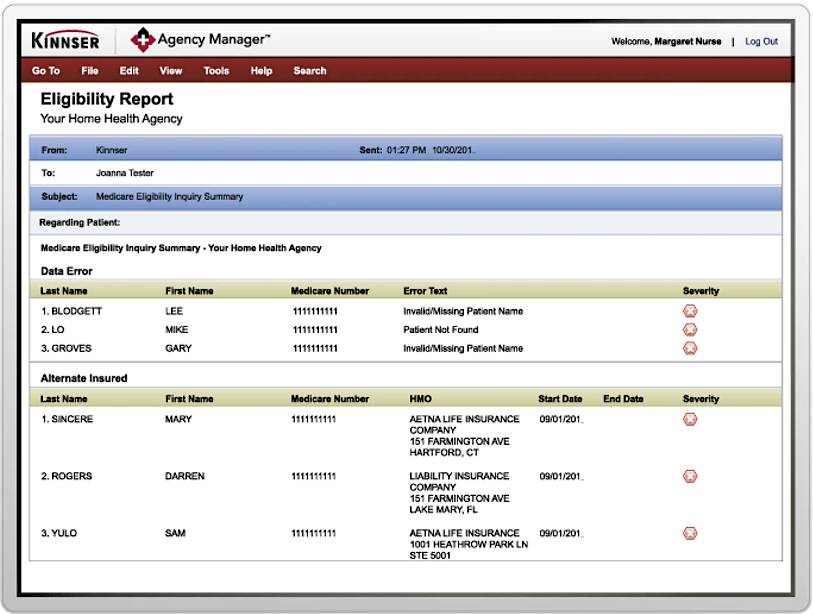
Medidata Solutions is a leading provider of cloud-based solutions for clinical research in the life science industry. It aims to improve the productivity and quality of clinical testing through its advanced application like intelligent data analytics:

Medidata is CFR Part 11 compliant that allows users to record patient information (like visits, lab, and adverse event data) using customized forms.
In 2019, Dassault Systemes SE, an industrial design software maker, bought Medidata Solutions for $5.7 billion.
MyCase enables law firms to run their business from anywhere. It offers features like case management, lead management, billing, client experience, and customer support:
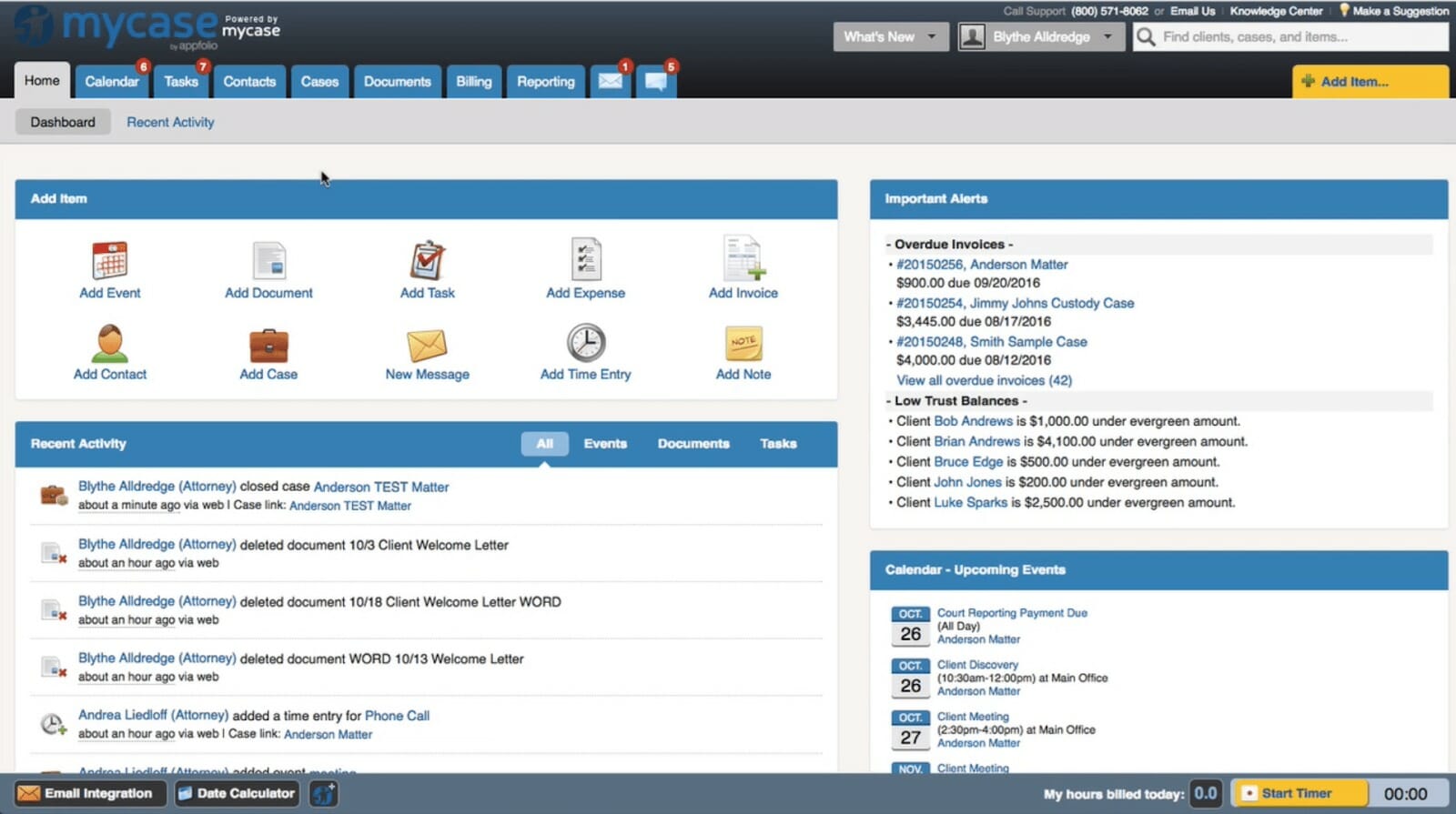
It allows users to manage and sync their calendars to collaborate with clients efficiently. MyCase also has a messaging platform that provides lawyers with a better way to communicate with their clients.
Book My Free SaaS Marketing Consultation
Vertical SaaS is growing at a fast pace because this model offers better solutions than its horizontal counterparts.
The future of SaaS is certainly heading towards vertical because more and more niche-specific software is being launched these days to serve the unique needs of the industry.
Artificial intelligence, blockchain, API integrations, and mobile SaaS products are helping vertical SaaS businesses to dominate their respective niche markets.
Are you considering getting into the vertical SaaS industry? Follow the tips mentioned in this article to implement a vertical strategy in order to get the best results from your efforts.
More SaaS Content:
* 8 SaaS Marketing Trends You Can’t Ignore in 2020
* Should You Offer a Freemium Level for Your SaaS Platform?
* 5 Reasons How SEO Benefits Your SaaS Business (+ SaaS SEO Strategy)
* 10 SaaS Business Lessons from $1B+ Unicorns (like Slack, Twilio, Lyft)
* A 3-Step Strategy to Build Links and Drive Referral Traffic to Your SaaS Website
The post Vertical SaaS: The Future of SaaS Is in Niche Industries appeared first on Single Grain.
Our mission since 2005 is to publish articles, webinars, and podcasts to help ecommerce merchants. What follows are the 10 most popular articles that we published in September 2020. Articles from early in the month are more likely to make the list than later ones.
The post September 2020 Top 10: Our Most Popular Posts appeared first on Practical Ecommerce.
The ongoing global pandemic has accelerated retail and B2B trends that make it relatively more difficult for some businesses to survive while upping the competitive bar for the entire ecommerce industry. These trends include everything from an increase in online sales and the growth of click-and-collect shopping to how software is built and integrated.
The post 2020 ‘Time Machine’ Elevates All of Ecommerce appeared first on Practical Ecommerce.

Watch Episode 17 on “Government”:
Read the Transript of Episode 17 on “Government”:
What’s up friends, Wil Reynolds here for another Wasteful Wednesday.
Today we’re talking about the gobment, G-O-B space M-E-N-T, the gobment.
We’re going to talk about government websites.…
The post Wasteful Wednesday with Wil Reynolds #17 – Keyword of the Week “Government” appeared first on Seer Interactive.

In its 11th year, the annual Content Marketing Institute B2B research delves into industry benchmarks, budgets, and trends. But this year we added one more category – how you and your peers responded to the pandemic and plan for the new normal. Continue reading →
The post 2021 B2B Content Marketing: What Now? [New Research] appeared first on Content Marketing Institute.
In recent times dark viewing mode for websites has gained a lot of popularity from users worldwide. The followership is so strong that Google right now offers you the ‘Night Eye’ feature where you can apply dark mode on any website as long as you’re using Google Chrome as your browser.
However, the popularity is further augmented with many applications and web designs exclusively adopting this new design feature to make users enjoy the experience that is different from conventional web designs.
According to a recent report by Built With, around 1,028 websites have used Dark Theme to attract customers, out of which 340 are live websites while 688 sites have used Dark Theme historically. Furthermore, Get Polarized conducted recent surveys on various social media platforms to comprehend users’ preferences when it comes to the dark mode or dark theme user interfaces.
It turns out that the majority of users gave an overwhelming response agreeing that the shift was appreciable.
In light of this information, let us take a quick look at some of the prominent reasons as to why dark mode web designs are gaining popularity.

Source: TechCrunch
To consider Google as the progenitor of dark mode would be too biased. In fact, many early home computers that used monochrome CRT monitors used to display greenish text on black screens, in recent times however it was Windows Phone 7 in 2010 that reintroduced dark-colored themes and backgrounds.
Right now, we have major tech giants and popular domains that have actively adopted the so-called ‘Night Mode’ and are offering customers and their users with the ability to shift their viewing preferences as per their choice.
These include big names like Facebook, Reddit, Twitter, YouTube, WhatsApp, Samsung’s One UI, Apple’s iPad and iOS 13, and Android 10 shadow mode, to name a few who are offering dark mode for users.
Together these online platforms and companies cater to the majority of the urban-tech population of the planet. Hence there is no doubt that night mode became a popular option for internet and smartphone users.

Source: Omg! Ubuntu!
While the dark mode is gaining popularity by users in recent times, seldom do people realize that for program developers and coders who design UI apart from other things, have been working on this theme for a very long time.
In fact, this dark mode theme has been the default look from most coding text editors out there. In fact, some of the most popular coding text editors, including Atom, Sublime Text, Brackets, and Visual Studio Code, all use dark themes.
Hence, it becomes quite easy to understand why coders and developers might influence this transformation when you look at this perspective. Furthermore, according to a recent study published by Medium.com, over 70% of software engineers use Dark Theme IDEs, and dark theme downloads are almost always within the top 10 themes as per popular demand.

Source: PhoneArena
It seems like biology is involved when dark theme preferences are further studied according to their impact on users and their eyes. The mechanics are simple. Seeing light text on a dark screen allows the iris in our eyes to be more burdened. It has to widen much more than it does in case of a white screen.
Hence, in dark viewing mode, our eyes’ pupil grows in size, thus requiring more effort to focus on things.
This is further backed by statistics regarding astigmatism, a condition that affects almost 33% of the US population. However, at the same time, dark mode is preferable when the reader on any device has low-light conditions and doesn’t prefer to read long chunks of text.

Source: Facebook
While the argument for using dark text on light backgrounds is fairly strong, however, the argument that it makes the experience aggravating for some also holds true. This is because the majority of users spend their days staring at bright white screens that can result in digital eye strain.
Digital eye strain is defined as a group of vision-related problems that result from prolonged use of cell phone, computer, e-reader, or tablet, to name a few. Many users thus consider the change as much more acceptable and agreeable. This allows them to sink into the darkness and cocoon themselves from bright white light that makes people feel as if they are staring directly into the sun.
While the dark theme does not make the text bold, it happens to create the opposite reaction where letters bleed, dark mode is more of a mood rather than just a feature. According to the recent survey findings on Medium, around 82.7% of participants stated that they prefer to use dark mode on their devices.

Source: TechSpot
At the 2018 Android Dev Summit, one of Google’s solutions to developers to reduce battery consumption was the introduction of dark UI. Researchers at Google proclaimed that night mode could save battery life.
This finding is shared through a story published by XDA Developers, where it is stated that a dark theme can reduce battery usage up to 63% on AMOLED displays even with max brightness. Furthermore, one also has to consider the fact that white pixels are indeed more power-hungry and that brightness affects both power usage and battery life in a linear fashion.
With dark mode becoming a prevalent theme across users, no wonder today, you can find various online guides to make any application and software on your smartphone or browser change the interface. This also adds as well as goes to show just how fanatic people can be at times when a trend hits them.

Source: 9to5Google
To understand the impact of the dark theme on SEO, we have to consider the user experience. This is due to the fact that users and the usability of your website play a huge role these days when it comes to search engine rankings. Hence if you are planning to go dark mode, then it has to be done right.
The short answer to the question of whether dark mode affects your SEO or not? The answer is NO, but that doesn’t mean that we can neglect users and not provide them with a user-friendly experience.
Hence using a dark theme doesn’t mean that search engines like Google will penalize you for it. It does, however, matter if you are adversely affecting the user experience in some way.

Source: Reddit
We all are pretty aware of the fact that the majority of the audiences seldom read texts online as the most viewed and popular forms of media are visuals that can be either categorized into videos or images. Hence user preferences do come into play when it comes to the popularity of dark-themed websites.
According to a recent study by Smart Insights®, 92% of marketers are using videos as an important part of their marketing strategy. Furthermore, it is estimated that on average people will spend as much as 100 minutes every day watching online videos in 2021.
This is also supported by the findings of Statista.com, where online video consumption is considered as one of the most popular forms of internet activities worldwide. Hence when taking these studies into perspective, it is definite that dark theme works well with online video streaming sites.
No wonder YouTube and Netflix have become dominant in the usage of these dark tones for the most part.
Lastly, I would like to add that reading or viewing media closely hinged together in a night mode theme website can be more difficult than with a more traditional white background website. Hence a strong word of advice, consider using more space between visual elements and texts when designing a dark themed website.
While laws of science and medicine state; otherwise, the dark mode has become instantly popular amongst the masses. I preferably define dark mode as more of a mood inkling rather than something more profound.
I hope this post was able to offer you some delightful insights regarding why dark mode web designs have gained popularity amongst users. For more questions regarding the topic, please feel free to share your feedback in the comment section below.
Amanda Jerelyn currently works as a Marketing Manager at Dissertation Assistance, a perfect place for students to buy academic writing services from expert dissertation writers UK. During her free time, she likes to practice mindful yoga to keep herself fit and healthy.
The post Why dark mode web designs are gaining popularity appeared first on Search Engine Watch.